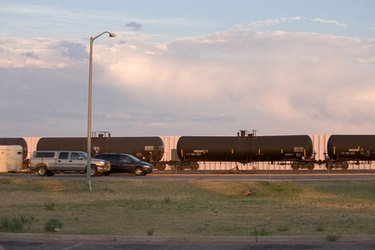
In general, the average speed of both freight and passenger trains have been on the decline since 1934. The reasons for this decline are both as long and varied as the trains themselves, but could possibly revolve around the emphasis that is placed on over-the-road transportation.
Maximum Speed
Locomotive engines for freight are designed to shut off automatically when they reach 910 RPMs (approximately 70-75 mph). However, freight trains seldom reach that level of operation because of track conditions or speed regulations. Most trains move slower depending on the track level. For instance track 1 classification has a limit of 10 mph while level 4 tracks can support speeds up to 60 mph.
Average Freight Train Speed
For the first decade of the 21st century, freight train speed has varied between 20 and 23 mph. The low was reached in 2006, when rail speeds averaged only 20 miles an hour. The figure has increased slightly since 2006 due to a weaker economy that has resulted in shorter lines of cars.
Efficiency Still Improving
The movement of goods across the country by freight trains could play an expanding role in a greener economy. This concept is underscored by the fact that over the past several decades the rail freight industry has been able to increase the tonnage shipped without adding to fuel consumption. All of this has occurred while the average speed of freight trains has remained steady.